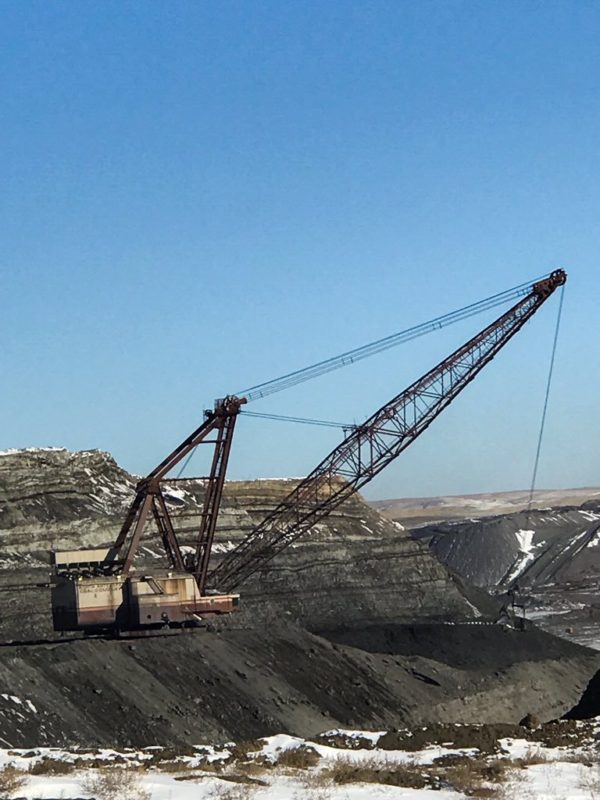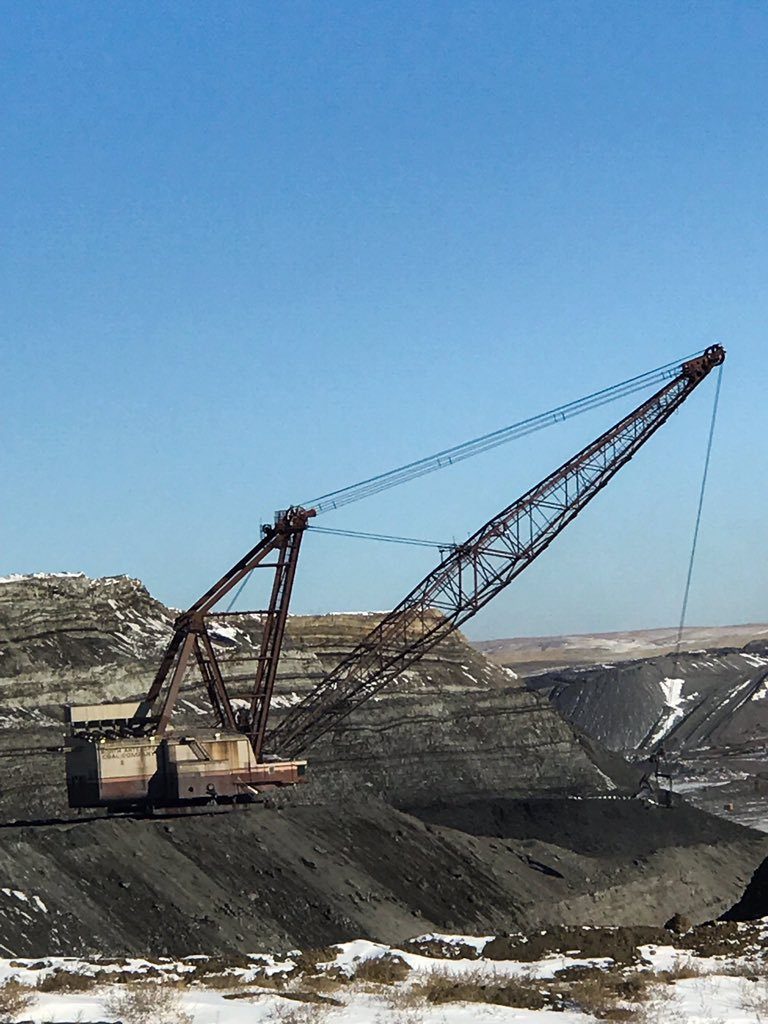It’s official: a federal bankruptcy judge has approved the sale of Cloud Peak Energy’s three Powder River Basin coal mines—Spring Creek in Montana, and the Antelope and Cordero Rojo coal mines in Wyoming—to a company called Navajo Transitional Energy Company (NTEC). A Cloud Peak attorney told the judge that NTEC probably won’t complete the purchase until the end of next week. But from the perspective of the bankruptcy court, the sale is all set to go forward.
To those of us who have watched Cloud Peak’s multi-year descent into insolvency, NTEC’s purchase raises a key question: does the Navajo Nation face any financial risk from NTEC’s foray into the PRB?
The answer is a clear yes: the Navajo Nation faces at least two kinds of financial risks from NTEC’s coal-fired spending spree. First, the Nation risks sub-par investment returns from NTEC’s high-risk gamble on coal. Second, and perhaps more importantly, the Navajo Nation could be forced to pay hundreds of millions of dollars to clean up NTEC’s mines.
Let’s dive in a bit, shall we?
NTEC: NECK DEEP IN COAL
Wholly owned by the Navajo Nation and incorporated under Navajo laws, NTEC is a relative newcomer to the US coal industry. The company was formed in 2013 to purchase the Navajo Mine, the chief supplier of coal to the nearby Four Corners Power Plant, both of which lie within Navajo territory. But declining coal demand has slashed the Navajo Mine’s revenues: in 2009 the mine shipped 8.8 million tons of coal to Four Corners, but that fell to just 3.5 million tons last year.
As the Navajo Mine’s struggles deepened, NTEC tried to branch out into new ventures. And while the company’s charter requires the company to invest at least 10 percent of its income in renewable and alternative energy, NTEC’s management—led by a trio of non-Navajo coal industry veterans, including a CEO who previously headed a failed coal export project in Oregon—focused its ambitions on buying up assets from the faltering US coal sector.
Earlier this year, the company tried—but failed—to buy the Navajo Generating Station, a coal-fired power plant on the western side of Navajo territory. Undeterred, NTEC looked northward towards the Powder River Basin (PRB), the nation’s top coal-producing region. The company’s management apparently viewed the year-long wave of PRB bankruptcies as an opportunity rather than a red flag, and bid on Cloud Peak’s assets in a bankruptcy fire sale. Cloud Peak then coaxed NTEC to raise its bid, and ultimately chose NTEC as the “winner” of its bankruptcy auction.
Yet it was a tainted victory. As coal industry analysts have pointed out, anyone who buys Cloud Peak’s mines will take on significant financial risks. We here at Sightline have documented Cloud Peak’s financial struggles for years, including the tremendous losses on Asian exports, the operational challenges at Cloud Peak’s mines, plummeting demand for Cloud Peak coal, narrowing profit margins, and massive, value-destroying write-downs of the company’s assets. What’s more, NTEC’s purchase comes in the midst of sharply declining coal sales across the country, continued coal plant closures, and a tsunami of coal industry bankruptcies.
There was a reason that Cloud Peak sank into insolvency, and why its massive mines sold for so little: it has become awfully difficult to make money mining coal. And if NTEC’s coal ventures fail, the Navajo Nation faces the prospect of dismal investment returns on the resources it has invested in NTEC.
ON THE HOOK FOR COAL MINE CLEANUP
But bad investment returns could be the least of the Navajo Nation’s worries. The worst-case scenario is far more troubling: ultimately, the Navajo Nation could face nearly $1 billion in costs for cleaning up after NTEC’s messes.
These financial risks stem, first and foremost, from Federal mining law, which requires coal companies to provide ironclad financial guarantees that they will clean up their mines.
When NTEC proposed to buy the Navajo mine, the newly-formed company didn’t have enough money to provide a rock-solid cleanup guarantee on its own. Instead, NTEC turned to the Navajo Nation to help the company take out so-called surety bonds, which are contracts that obligate a surety company (typically an arm of a big insurance company) to clean up if NTEC can’t.
Surety bonds are sometimes described as a form of insurance, but the comparison misses a crucial fact: a surety company never expects to take a loss on any surety bond. To protect against losses, surety companies always look for deep pockets that can reimburse the company for any losses. In the case of NTEC, the deep pocket was the Navajo Nation itself. The Nation signed special contracts called indemnity agreements with the sureties, committing the Nation to cover up to $463 million worth of NTEC’s liabilities: $163 million to clean up the Navajo Mine, plus an additional $300 million to guarantee steady coal supplies to the Four Corners Power Plant.
Stunningly, these indemnity contracts have no expiration date: they will remain in effect until the liabilities are fully resolved, or the surety bonds are replaced. What’s more, when the Navajo Nation signed the contracts, it granted a limited waiver of Navajo sovereign immunity, meaning that the surety companies can sue the Navajo Nation in state courts, rather than in Navajo courts. Sovereign immunity—the legal doctrine of indigenous self-determination—has been described as “a central axiom of Indian law.” No tribe takes its sovereignty lightly. But NTEC had the Navajo Nation over a barrel: no sovereignty waiver, no surety bond; and without a bond, and the Navajo Mine purchase was dead in the water.
When NTEC tried to buy the Navajo Generating Station, it proposed that the Navajo Nation sign an indemnity agreement similar to the one in place for the Navajo Mine. And to buy Cloud Peak’s mines, it’s likely that NTEC will pull the same maneuver, asking the Navajo Nation to sign additional indemnity agreements and sovereignty waivers that would commit the Nation to pay some $400 million in cleanup and related costs at the Cloud Peak mines.
If the Navajo Nation does sign those agreements, it will officially be on the hook for the costs of cleaning up enormous coal mines in Wyoming and Montana, hundreds of miles away from Navajo territory.
AN EASY WAY OUT
For years to come, NTEC’s cleanup liabilities will hang over the Navajo Nation like a sword of Damocles, poised to do deep damage to the Nation’s financial health. As of the beginning of 2018 the Nation’s Master Trust program—investment funds that help secure the nation’s financial future—held $3.28 billion in assets. So if NTEC goes bankrupt, the financial fallout from the existing Navajo Mine liabilities could effectively wipe out a significant share of the Tribe’s nest-egg.
Adding the Cloud Peak liabilities will just make the financial fallout of an NTEC collapse that much worse, allowing financial contagion to spread southward from the PRB all the way to Navajo territory.
And given NTEC’s plans to double down on coal, there’s a very real possibility that the company will eventually fail. NTEC has touted a slipshod and preposterously rosy “study” that aims to show that the Cloud Peak mines have a bright future. But most reality-based energy analysts expect the coal industry to continue to struggle. Rapidly declining costs for wind, solar, and energy storage will steadily eat into coal’s market share. Cheap fracked gas will keep coal prices low and profits slim. And it’s hard to see how those trends could be reversed. As Kevin Crutchfield, the former CEO of coal giant Contura Energy recently said, the business of selling coal to US power plants “is in a constant state of decline or decay, any way you slice it or dice it.” (Contura itself has paid more than $110 million to coax other companies to buy two massive PRB mines, simply to avoid paying to clean up those mines itself.)
At this point, if the Navajo Nation agrees to take on NTEC’s cleanup liabilities, it will just be adding fuel to a smoldering fire. Yet there’s absolutely no reason why the Navajo Nation must continue to enable NTEC’s questionable business judgment. The Navajo Nation Council could simply reject any indemnity agreements for cleaning up the Cloud Peak mines. Or, at a minimum, the Council could refuse to waive its sovereign immunity with respect to the indemnity agreements. Given the dismal state of the US coal industry, the safest move for the Nation is simply to steer clear of any commitments to clean up after the coal industry’s mistakes.
Clark Williams-Derry is the director of energy finance at Sightline. He focuses on US and global and energy markets and his recent research covers the financial and fiscal implications of “self-bonding” for coal mine reclamation; the financial viability of West Coast coal export projects; Pacific Rim coal market dynamics; greenhouse gas accounting for coal export projects; issues emerging from coal industry bankruptcies; and the interactions between federal coal leasing policy and coal exports. To contact Clark or for media requests, contact Sightline Communications Manager Anne Christnovich.










Skye
Thanks for all your great reporting and analysis. As someone who lives in Wyoming, it is refreshing to see “reality-based” ideas.
Duane Beyal
We at the Navajo Times, a weekly newspaper based in Window Rock, Ariz., would like to reprint this column. What do we need to do? Thanks.
Danny Shipley
I wish my delegate would wake up…and realize where our leaders are taking our sovereign status as Nation.
All them folks in senior positions in
window rock are succumbing to greed
Nancy
Sightline is doing unmeasurable service to the people who want to live with fair and reasonable laws and, most important, spread out responsibility for climate damage to those who are causing more than their share and who can afford to do more than they are doing. The Navajo Nation does not deserve any unfair “deals” from fossil fuel racketeers and dishonest people who don’t care about our earth.
T Atcitty
The coal companies who started these coal mines should be the ones responsible for
the cleanup and reseeding the land. That is my view of the situation.
Amy Saunders
Hi! I attest to your remark that any mining activity must take into consideration the living condition of the indigenous groups surrounding the proposed area. There has been a report by my neighbor’s relatives in West Virginia recently about some attempts to extract coal from an abandoned mine near their houses. I’ll tell them to hire a legal expert to determine the legitimacy of the situation after this. https://www.pawlowskibilonickandlong.com/black-lung